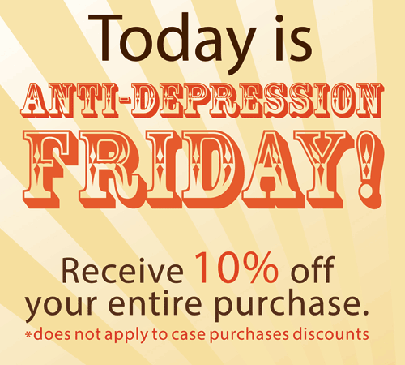Anti-Depression Friday Helps Customers, Builds the Co-op

In the autumn of 2008, as the national economy began its nosedive, sales trends at the Sacramento Natural Foods Cooperative began to mirror that dive. While in previous months annual sales had grown at a 7 percent rate, by December that rate had dropped to 1 percent.
Exacerbating the national economic decline, the state of California was experiencing huge budget deficits and had initially decided to furlough all state workers on the first Friday of the month, then extended that to three days per month. Sacramento is the state capital, and a large percentage of its residents are employed by the state. The partially employed workers added to the number of fully unemployed workers, whose numbers had risen to 12.5 percent of the local population.
Out of this situation, Anti-Depression Friday (ADF) was born as our own co-op brand of economic stimulus. Taking a cue from the First Friday state worker furloughs, in March of 2009 we decided to experiment by offering all of our shoppers a 10 percent discount on their purchases on the first Friday of the month. And we were overwhelmed by the reaction. In previous months, Friday sales averaged $61,000. On our first ADF, sales were $126,000. The next month they came in at $136,000—then continued to grow by $7,000–$10,000 each month, peaking at $191,000—three times our previous average Friday sales.
This explosion caused us to make some adjustments, mainly for our employees, who were being literally overrun by the level of activity. After a few months, we began preparing lunch and dinner for our staff and offering a $2.00-per-hour pay premium for everyone who worked on ADF. In addition, each month we picked at random the names of three employees who worked ADF and rewarded them with a $50 co-op gift card.
Less is more
Even with the discounts and those added costs, ADF has proved to be profitable. While during the first few months we did experience some cannibalization of sales on the days before and after ADF, after a while that trend ended. Lots of customers who had stopped shopping at the store were coming back; new people were drawn to the store for the first time; and our gesture to help out in tight times was greatly appreciated.
Within less than a year, the co-op’s annual sales growth was back to over 6 percent. Sales growth has continued at that level through the present, even as the local economy has only recently begun to show any signs of recovery, and even as we have maxed out our store space with sales per square foot approaching $2,500 per year. (Yes, we will be relocating to a larger store.)
Anti-Depression Friday came about as a response to economic hard times, but its positive effects on both customer perception and the co-op’s bottom line make it likely that it will be part of our identity well beyond any economic recovery. n







